
Greytown
A small town in the Natal Midlands, geo-position: 29.0623S, 30.5907E and 517m altitude.
History
The town was first laid out in 1850 on the farm of LJ Nel. The people of the area who were mostly Voortrekkers wanted to name the place after Andries Pretorius (the Voortrekker leader), but that was vetoed by the government who named it after the governor of the Cape, Sir George Grey.
Churches
Anglican Church

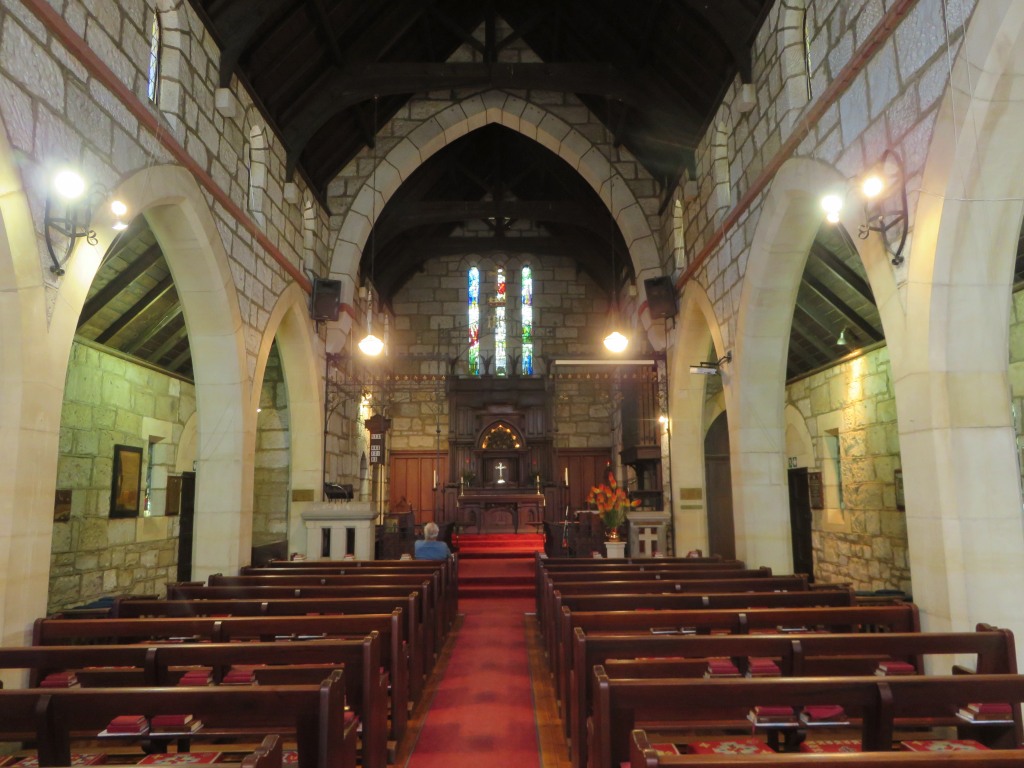 It is the St.James Anglican church, a pleasing sandstone building. It was built 1911. There was an older church of which some of the elements were transplanted into the newer church, such as the foundation stone, the doorway and some glass stained windows. The old church was built in 1867 and demolished in 1911. A memorial stone marks the spot where it used to stand.
It is the St.James Anglican church, a pleasing sandstone building. It was built 1911. There was an older church of which some of the elements were transplanted into the newer church, such as the foundation stone, the doorway and some glass stained windows. The old church was built in 1867 and demolished in 1911. A memorial stone marks the spot where it used to stand.
The inside of the church is well decorated and has memorial plagues all around. Including some beautyfull stained glass windows, all donated by and in memory of a person.
A fair amount of space is used by the Umvoti Mounted Rifles. Since the time they were formed in 1864 they have been involved in many conflicts, such as the Zulu War, the Anglo Boer war, the Bambata rebellion, the 1st World War and the 2nd World War. Which brings me to one of the plaques and I have a gripe. It reads: To the Glory of God; and in cherished memory of; the old boys of St Davids House; Greytown; who laid down their lives; in the cause of humanity; in the great world wars; 1914-1918 and 1939-1945. Now, my grandfather also died in one of those wars, but he was fighting for the other side, did he also do that for the glory of God? Just asking, I think we have a misuse of the name of God here. Sorry, just a little gripe that I had to vent.
Methodist Church
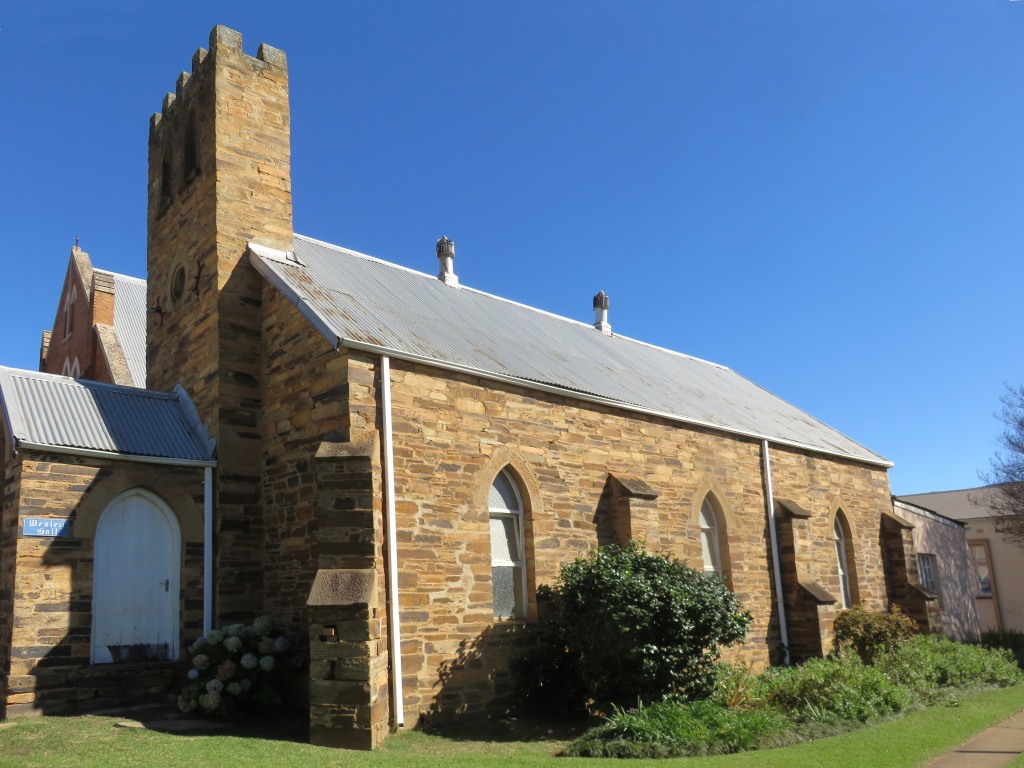 We have two Methodist churches in Greytown, The one in the picture is the first and oldest one, erected in 1877. It was built using natural stones available in the area. The piece of gable showing on the top left is from the newer church, which is the one in use now. According to the foundation stone that one was laid in April 1902.
We have two Methodist churches in Greytown, The one in the picture is the first and oldest one, erected in 1877. It was built using natural stones available in the area. The piece of gable showing on the top left is from the newer church, which is the one in use now. According to the foundation stone that one was laid in April 1902.
NG church
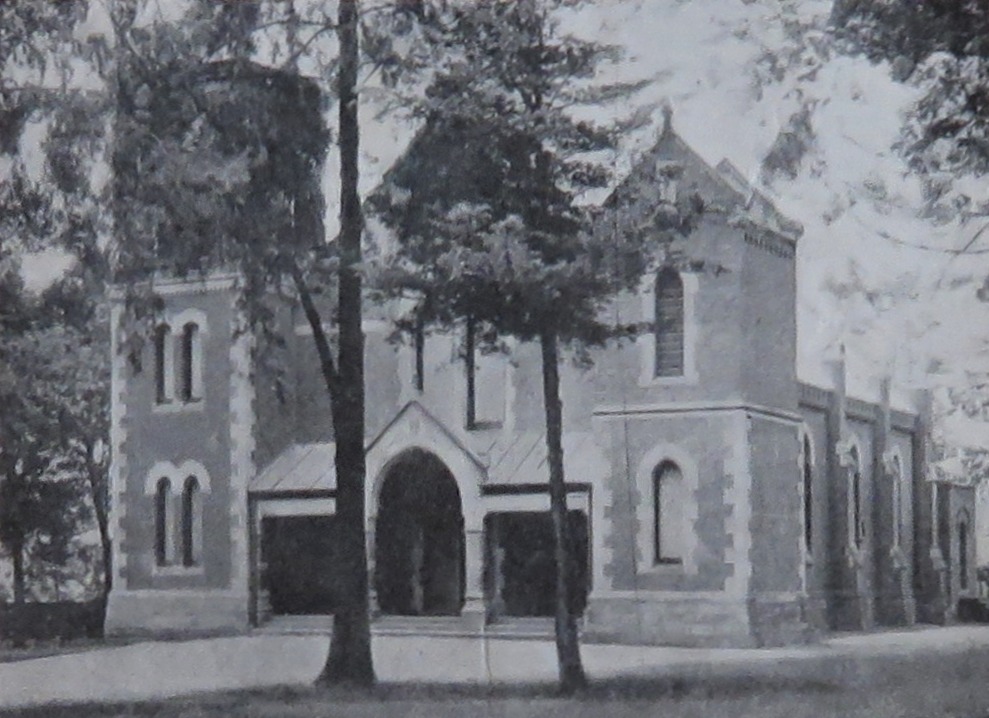
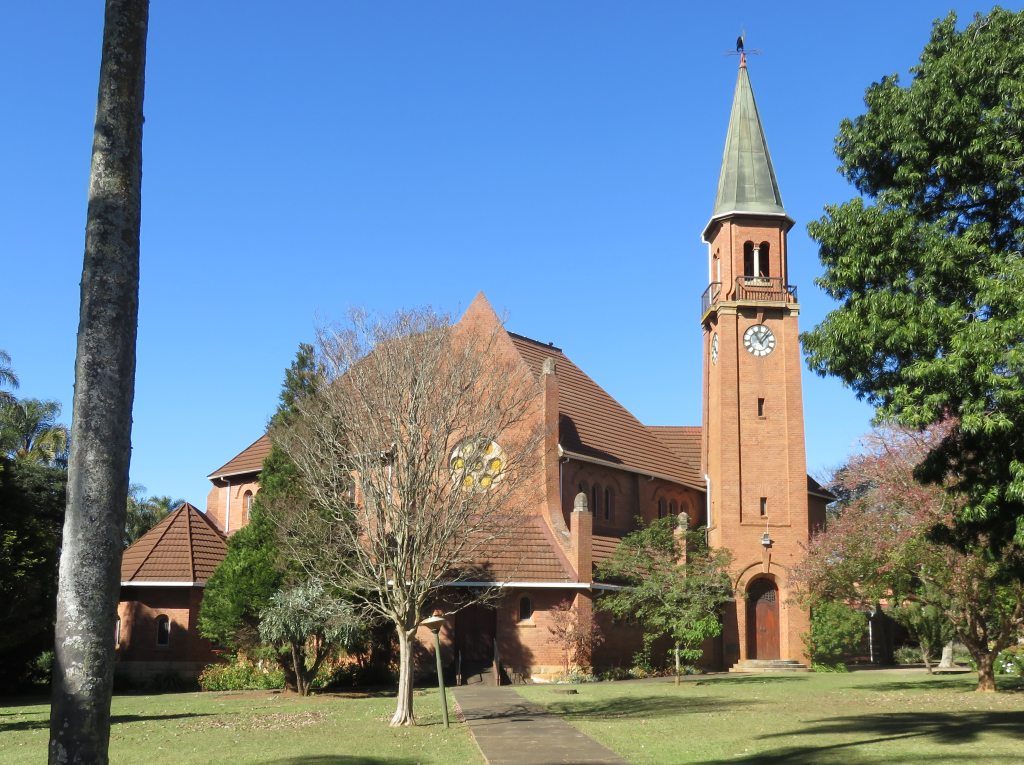 The congregation of the NG church (Nederduitsch Gereformierte Kerk) ceded from the Pietermaritzburg congregation in 1859. The first church was built in 1866. That building was so severely damaged by a storm in 1878 that it had to be demolished. A new church was inaugurated 1883, that is the one in the picture (source ref 2).
The congregation of the NG church (Nederduitsch Gereformierte Kerk) ceded from the Pietermaritzburg congregation in 1859. The first church was built in 1866. That building was so severely damaged by a storm in 1878 that it had to be demolished. A new church was inaugurated 1883, that is the one in the picture (source ref 2).
Growing numbers made it eventually necessary to construct the 3rd church. This is the one still standing today. Inaugurated in 1929, it was designed by the architect Wynand Louw.
Museum
 A very well stocked the museum. It used to be the house of the magistrate. Originally built by Dr,Daniel Birtwell on land bought by him in 1879. Dr.Birtwell was the district surgeon at the time. 1889 he sold the residence and some of the land to the government. A number of magistrates stayed in it until it was sold to the Greytown municipality 1973 and it became a museum.
A very well stocked the museum. It used to be the house of the magistrate. Originally built by Dr,Daniel Birtwell on land bought by him in 1879. Dr.Birtwell was the district surgeon at the time. 1889 he sold the residence and some of the land to the government. A number of magistrates stayed in it until it was sold to the Greytown municipality 1973 and it became a museum.
The large fig tree in the ground has a history, it was planted by Annie Birtwell (nee Botha), the wife of the doctor and the sister of the later prime minister of SA, Louis Botha.
I have to apologise for not having a picture of the house itself, I had one but it got lost in my computer. Is there anybody in Greytown who could supply me with a picture, the author will be acknowledged, of course.
Grave of Sarie Maré
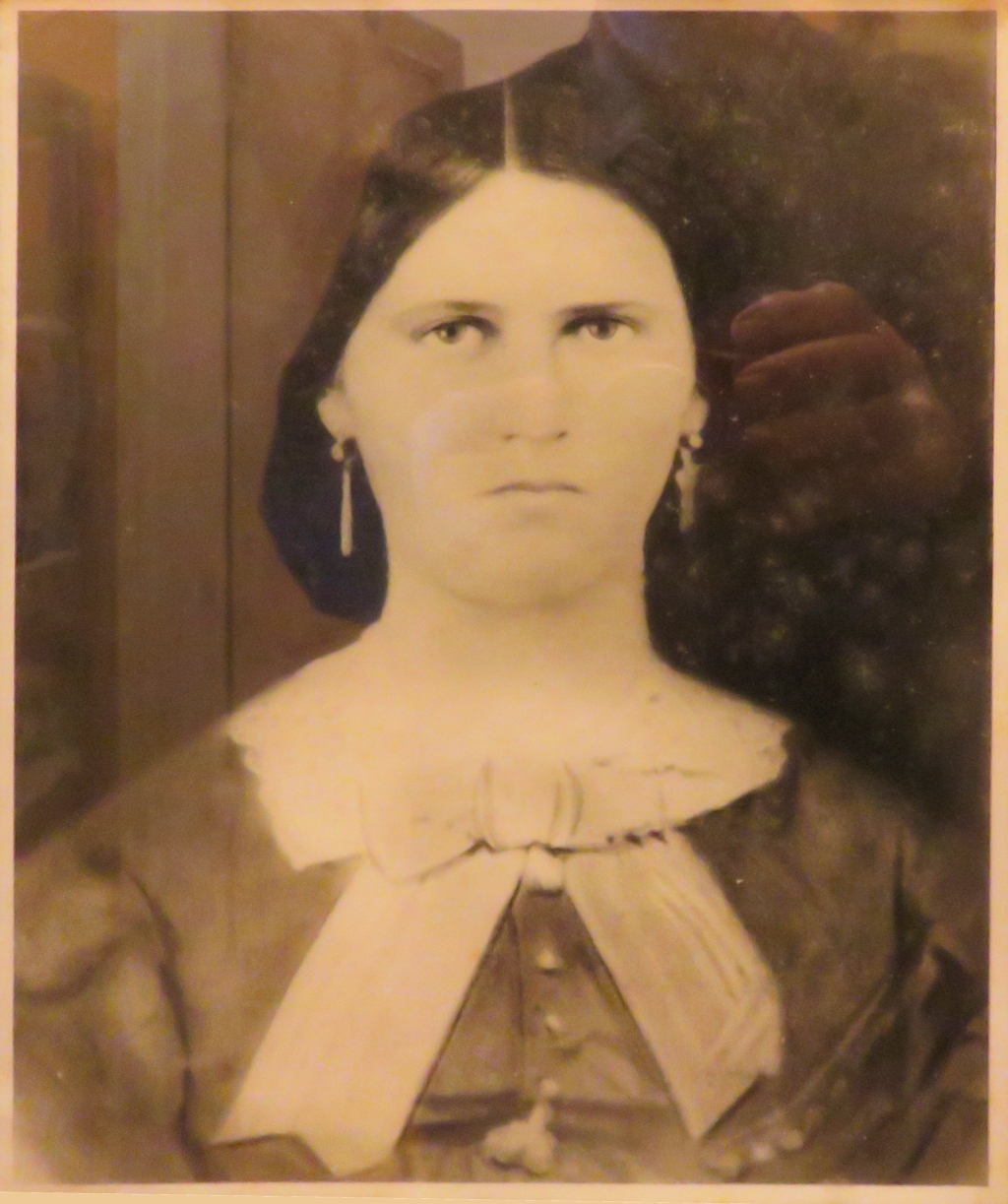
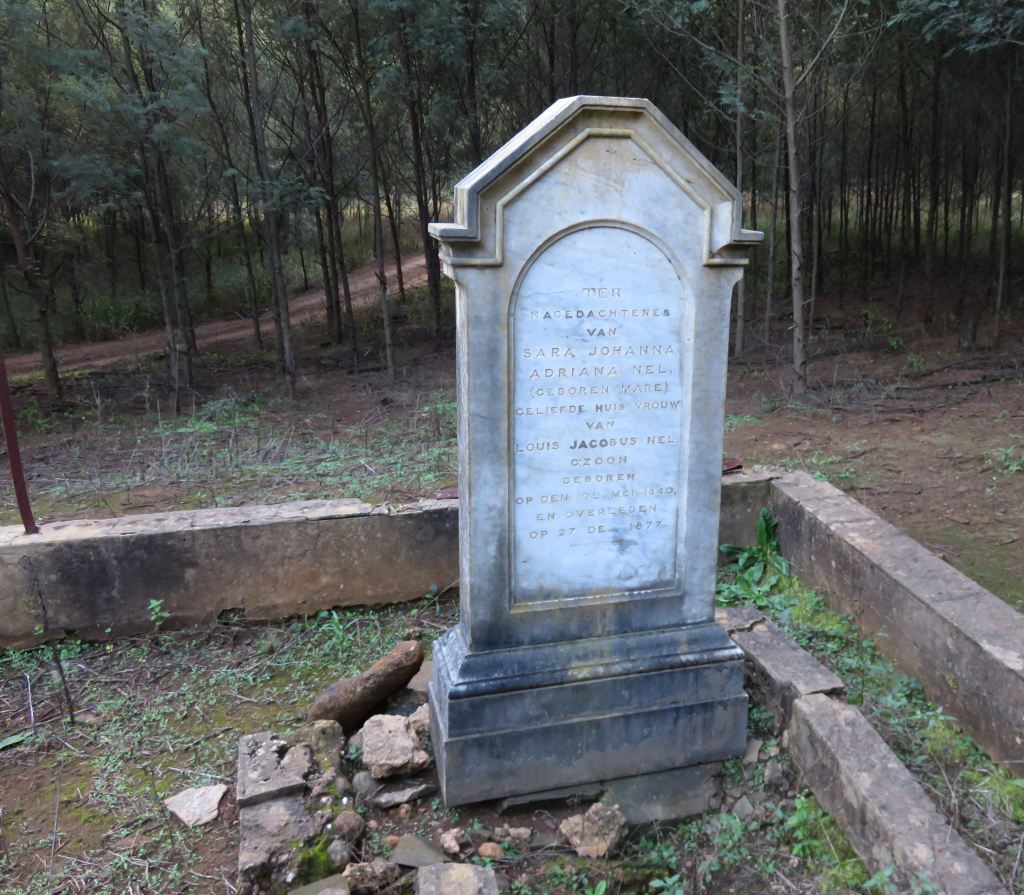 When I initially got to this grave I was somewhat skeptical about it's identity. How can it be that a grave marked Sara Marais can be the Sarie Maré of the well known Afrikaans folksong? It all got revealed when I visited the museum in Greytown.
When I initially got to this grave I was somewhat skeptical about it's identity. How can it be that a grave marked Sara Marais can be the Sarie Maré of the well known Afrikaans folksong? It all got revealed when I visited the museum in Greytown.
The grave is about 20 km out of town near the Kranskloof road. The route to it is well sign posted.
The background to the song is as follows. In early 1902 Boer general Louis Botha was concentrating his forces around the Vryheit and Utrecht districts in preparation for a new invasion of Natal. Ella de Wet, wife of NJ de Wet, a member of Gen.Botha's staff, took up residence in one of the farm houses. Having access to a piano she encouraged the Boer soldiers to sing. She only had a book of American songs available. The one song that caught on was 'Ellie Rhee'. It wasn't long and the words were replaced by a text about Sarie Maré. And this goes back to Paul Maré, a chaplain with the Boer forces who loved to tell stories, many of them featuring his mother, Sarie Maré.
Her proper name was Sara Marais, was born in 1840 and died 1877, after having given birth to eleven children. She was buried on this farm, in those days part of Natal.
The grave stone reads translated from Dutch: In memory of; Sara Johanna Adriana Nel, born Maré; beloved house wife of; Louis Jacobus Nel; born 10 May 1844; died 27 Dec 1877.
The grave next to it is marked: Sarah Johanna Adriana Maré, 1810 to 1875. This could have been her mother.
The sound clip is the first verse of the song and it is from an LP record, South African Sing Along, 1967. Not a very good recording, I don't have the technology for a good scan.
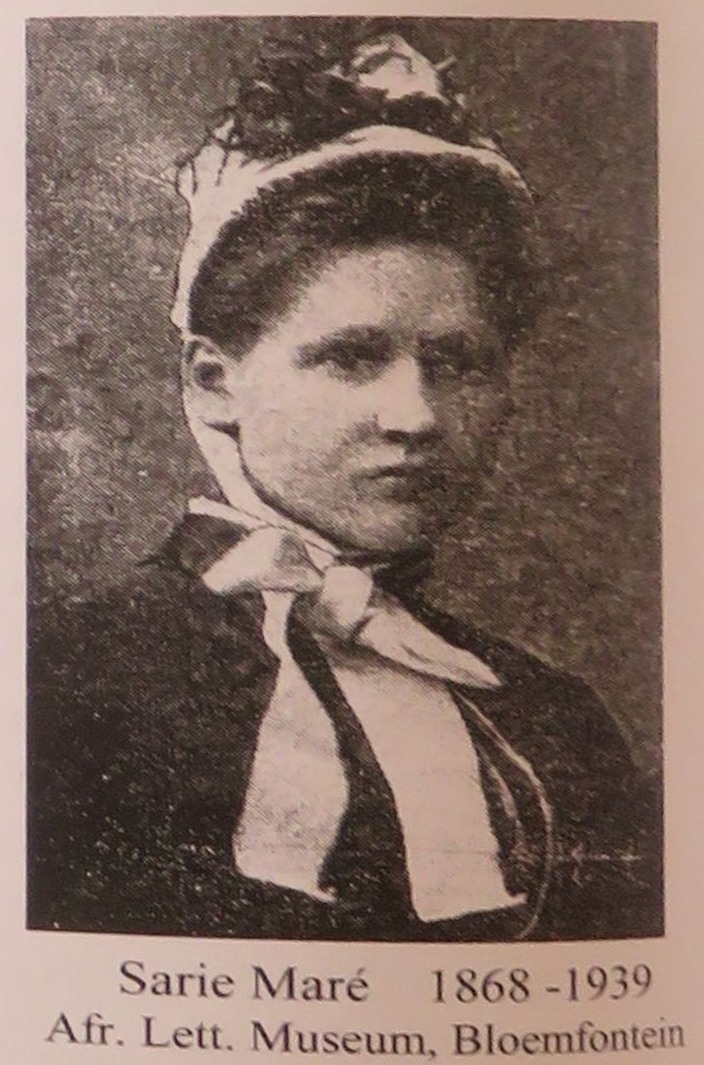 PS Sept 2019: here is something interesting, I have just come across another Sarie Maré. In a book by Piet en Peet Schabort, 'Schabort Familiegeskiedenis'; the authors claim that the song referred to Susara Margaretha Toerin, her maiden name was Maré. The first verse of the song was written by Jacobus Petrus Toerin at a time when he was courting Sarie. Verses were later added by Dirk van Alphen. She was a daughter of Jacob and Cornelia Maré, born 15-4-1868 on the farm Eendragt near Heidelberg Transvaal and died 22-12-1939, her remains are buried in the Memorian Begrafplaas in Bloemfontein.
PS Sept 2019: here is something interesting, I have just come across another Sarie Maré. In a book by Piet en Peet Schabort, 'Schabort Familiegeskiedenis'; the authors claim that the song referred to Susara Margaretha Toerin, her maiden name was Maré. The first verse of the song was written by Jacobus Petrus Toerin at a time when he was courting Sarie. Verses were later added by Dirk van Alphen. She was a daughter of Jacob and Cornelia Maré, born 15-4-1868 on the farm Eendragt near Heidelberg Transvaal and died 22-12-1939, her remains are buried in the Memorian Begrafplaas in Bloemfontein.
There we are, how do we find out which is the true Sarie Maré?
Railway Station
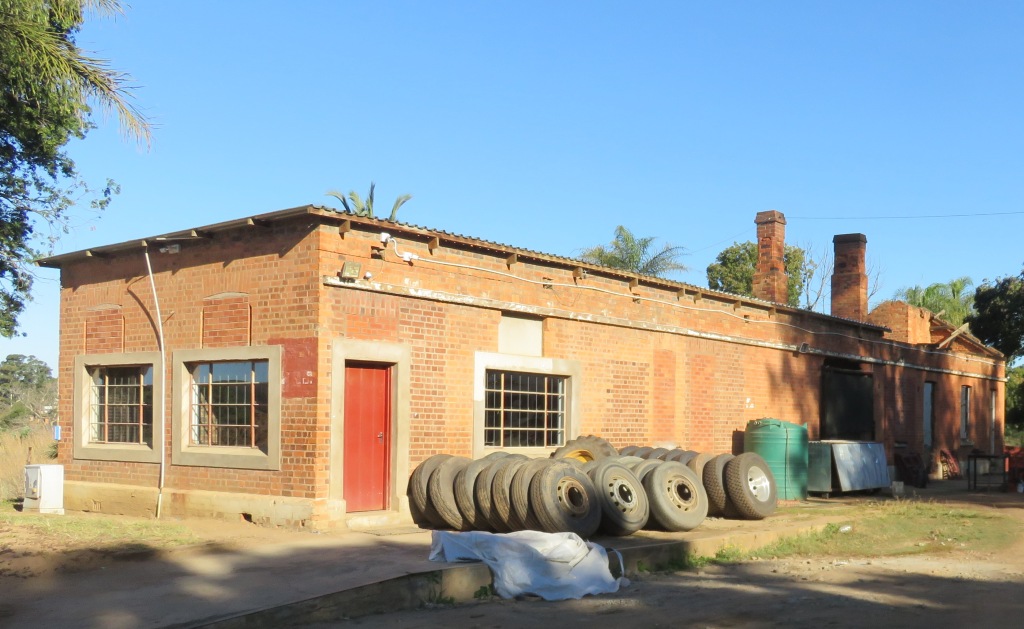
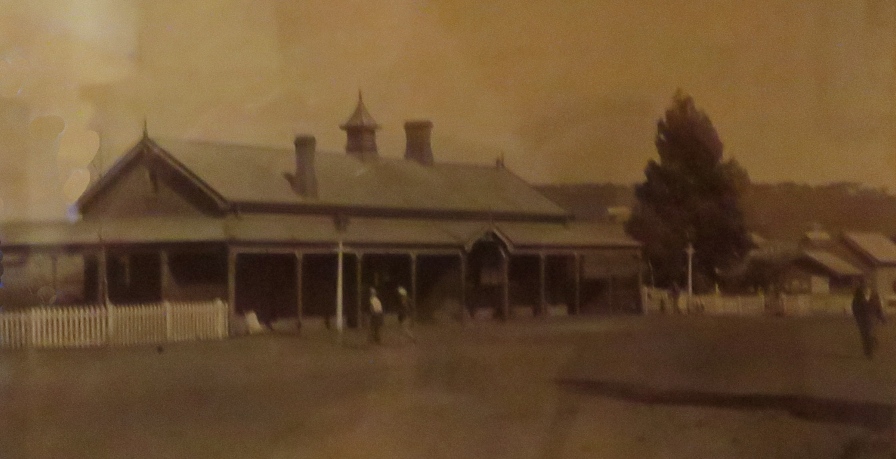 The trains don't run anymore, the line is out of use. The town was connected by rail to Pietermaritzburg in 1900. It was later (1914) extended to Kranskop. The station building is still there as a partial ruin, now being used by a trucking company.
The trains don't run anymore, the line is out of use. The town was connected by rail to Pietermaritzburg in 1900. It was later (1914) extended to Kranskop. The station building is still there as a partial ruin, now being used by a trucking company.
Government buildings

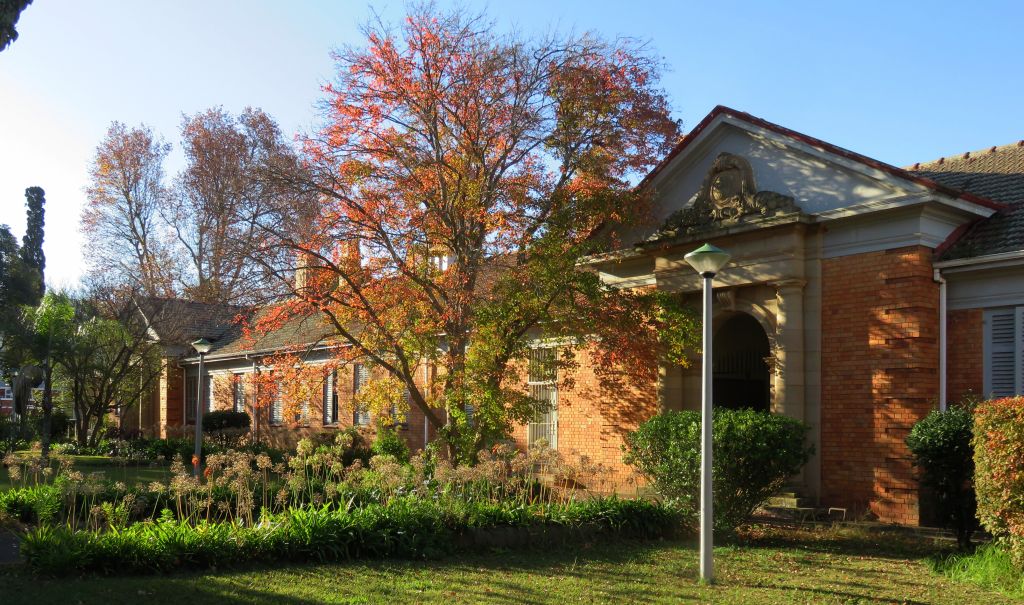 The town hall, a very attractive building in a colonial style. The foundation stone was laid in 1897, but the Boer War interrupted construction, such that completion was only in 1904. The original design was by Stott and Tomlinson.
The town hall, a very attractive building in a colonial style. The foundation stone was laid in 1897, but the Boer War interrupted construction, such that completion was only in 1904. The original design was by Stott and Tomlinson.
Another building of note is the Magistrate. It was built in 1924 in a utilitarian style with a nice entrance facade.
Cemetery
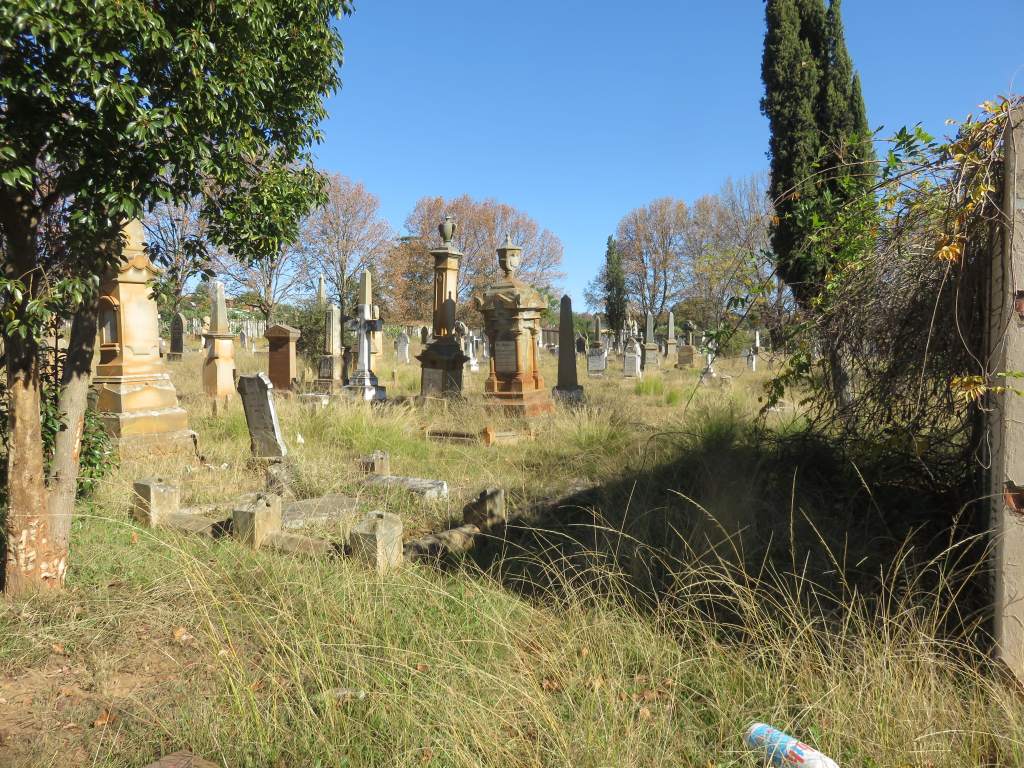
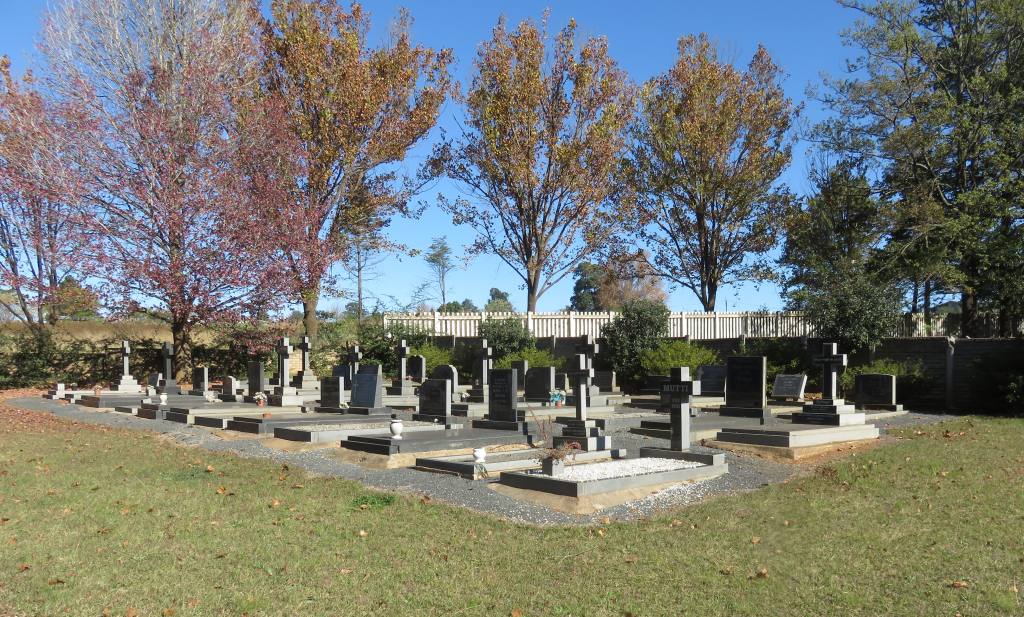 I was unable to make a good study of the graveyard, time didn't allow that. Thus I just went through it fairly quickly picking up a grave stone of interest now and then. At the bottom end is a separate little cemetery, this is the 'Friedhof der Evangelisch-Lutherischen Bekenntnissgemeinde' or cemetery of the evangelical-lutheran congregation. Naturally, clean and well kept.
I was unable to make a good study of the graveyard, time didn't allow that. Thus I just went through it fairly quickly picking up a grave stone of interest now and then. At the bottom end is a separate little cemetery, this is the 'Friedhof der Evangelisch-Lutherischen Bekenntnissgemeinde' or cemetery of the evangelical-lutheran congregation. Naturally, clean and well kept.
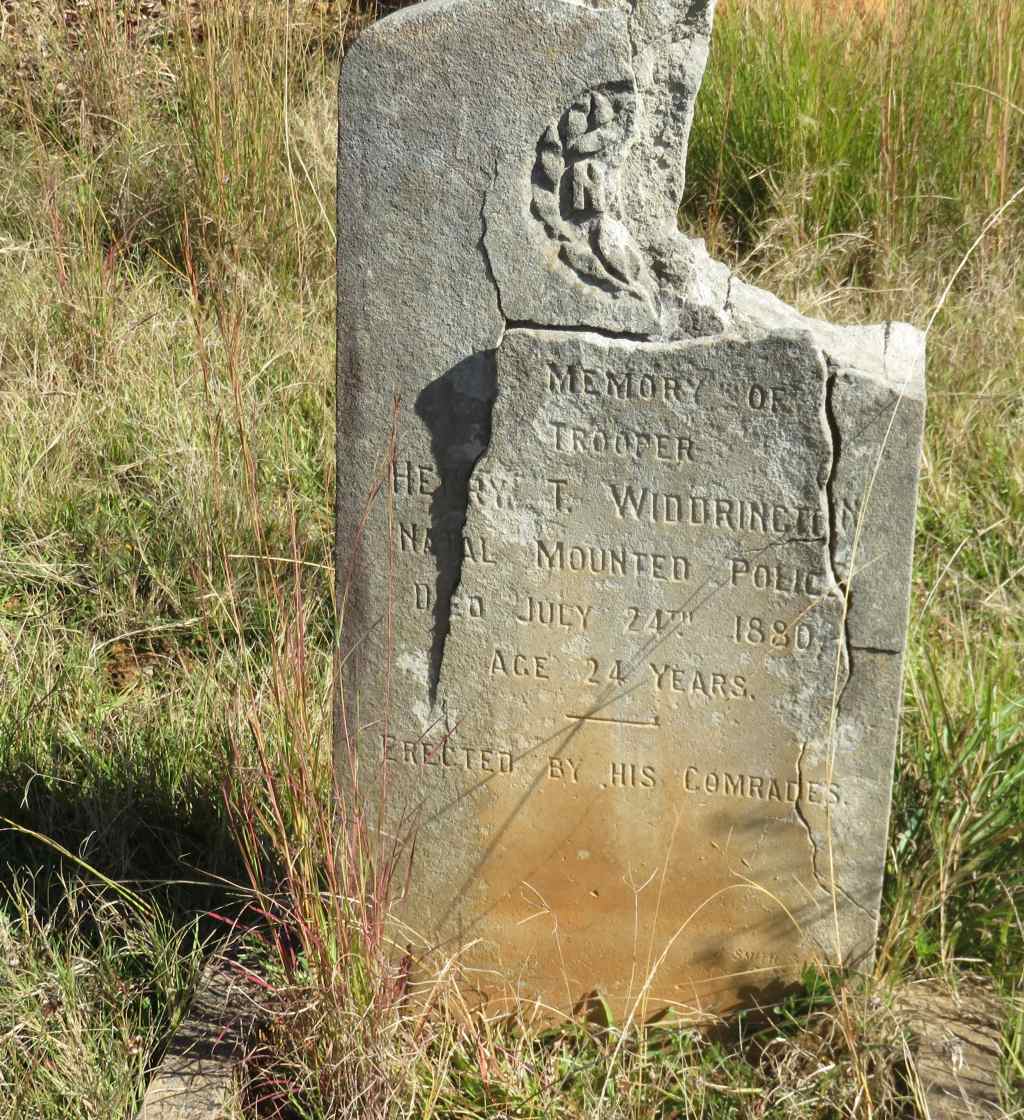
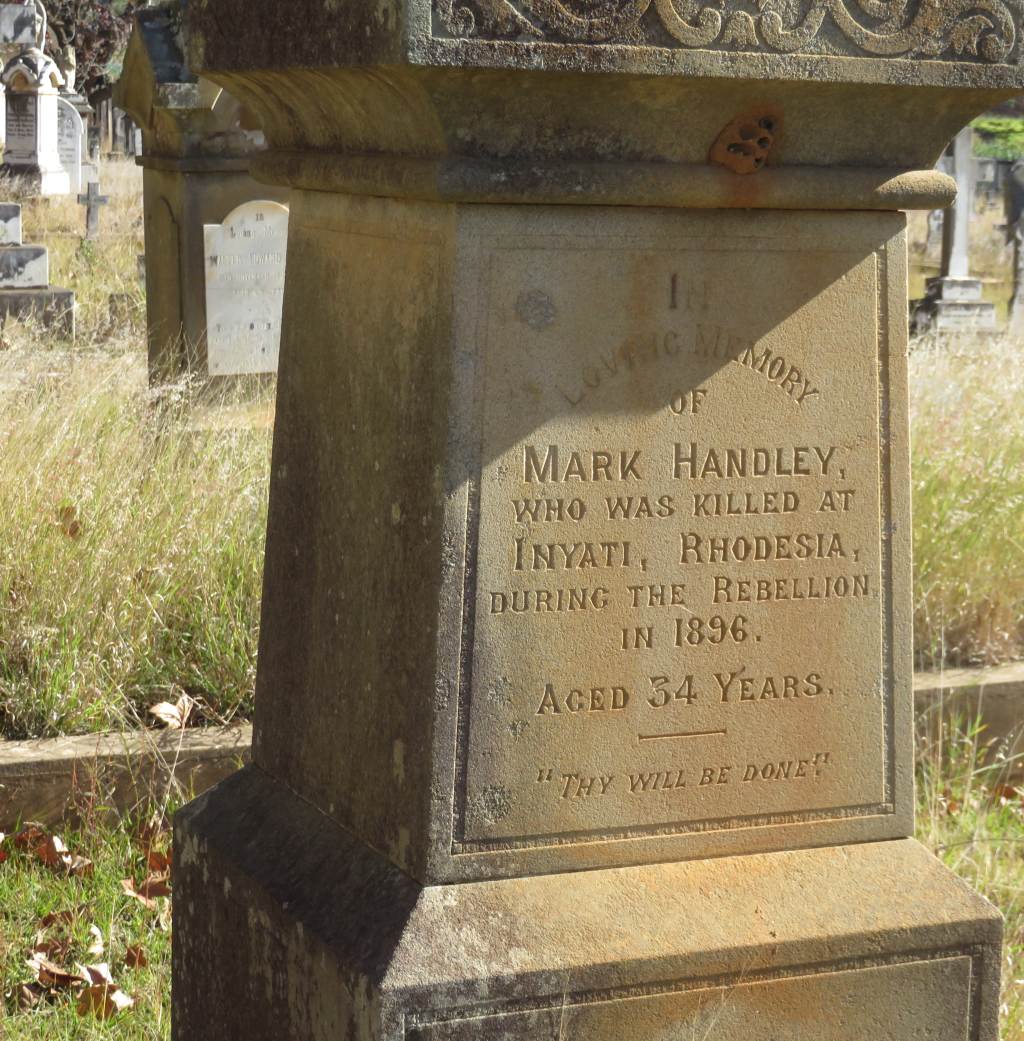 In the older section I found many graves going back to the last quarter of the 19th century. Just as an example there is the badly eroded and cracked tomb stone of Henry T Widdrington, Natal Mounted Police, Died July 24th 1880; age 24 years. There were other graves of the NMP.
In the older section I found many graves going back to the last quarter of the 19th century. Just as an example there is the badly eroded and cracked tomb stone of Henry T Widdrington, Natal Mounted Police, Died July 24th 1880; age 24 years. There were other graves of the NMP.
An other one of historical interest is that of Mark Handley, who was killed at Inyati, Rhodesia during the rebellion in 1896, aged 34 years.
Umvoti Mounted Rifles
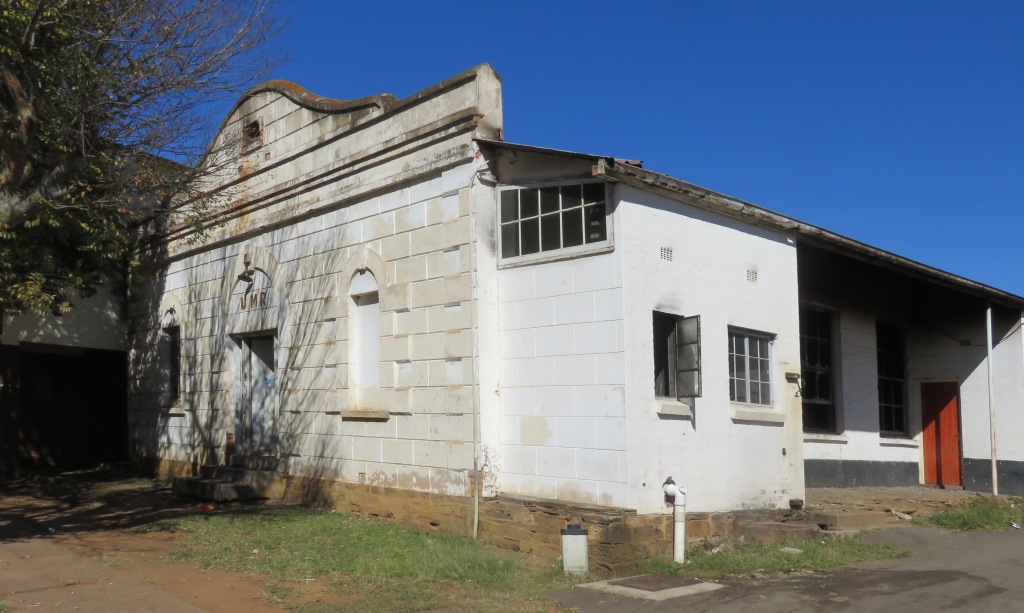
 The Umvoti Mounted Rifles started as a military unit in 1964 with 45 cavalry volunteers. Later they were transformed to a motorised regiment in the South African army. Over the century and a half they were involved in all the major conflicts, Zulu war, 2nd Anglo Boer war, Bamabata Rebellion, both World Wars, Cato Manor and the SWA border war. The number of men lost during some of theses conflicts can be read on a commemorative plaque in the Anglican church, 1 in the Anglo Boer war, 3 in the 1st World War and a staggering 37 in WW2.
The Umvoti Mounted Rifles started as a military unit in 1964 with 45 cavalry volunteers. Later they were transformed to a motorised regiment in the South African army. Over the century and a half they were involved in all the major conflicts, Zulu war, 2nd Anglo Boer war, Bamabata Rebellion, both World Wars, Cato Manor and the SWA border war. The number of men lost during some of theses conflicts can be read on a commemorative plaque in the Anglican church, 1 in the Anglo Boer war, 3 in the 1st World War and a staggering 37 in WW2.
Their head quarter is across the road from the Anglican church. The building was originally erected as a masonic hall in 1877. It is a burned out shell. The regiment as such doesn't exist any more.
Memorial Park
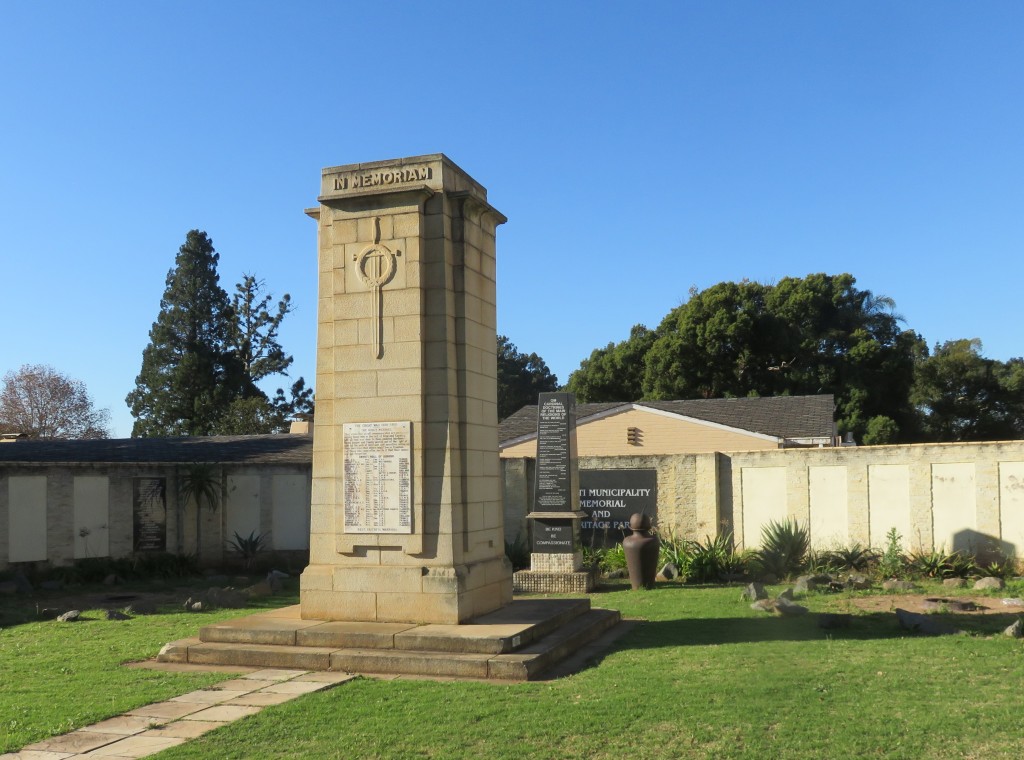 Next to Town Hall is a little memorial park, it is a place where the different groups of people can erect a monument to their people. It most likely started with a memorial to the fallen soldiers of the 1st- and 2nd world war, which takes up a central position.
Next to Town Hall is a little memorial park, it is a place where the different groups of people can erect a monument to their people. It most likely started with a memorial to the fallen soldiers of the 1st- and 2nd world war, which takes up a central position.
 On the corner closest to the town hall is a memorial to King Dinuzulu. He was king of the Zulus from 1884 to 1913. At the end of the Zulu war and the defeat of Cetshwayo the British annexed the Zulu territory and split up the kingdom into smaller parts ruled by chiefs. This didn't work very well and the colonial administration had to concede and allowed the appointment of the son of Cetshwayo, that was Dinuzulu, as paramount chief.
On the corner closest to the town hall is a memorial to King Dinuzulu. He was king of the Zulus from 1884 to 1913. At the end of the Zulu war and the defeat of Cetshwayo the British annexed the Zulu territory and split up the kingdom into smaller parts ruled by chiefs. This didn't work very well and the colonial administration had to concede and allowed the appointment of the son of Cetshwayo, that was Dinuzulu, as paramount chief. 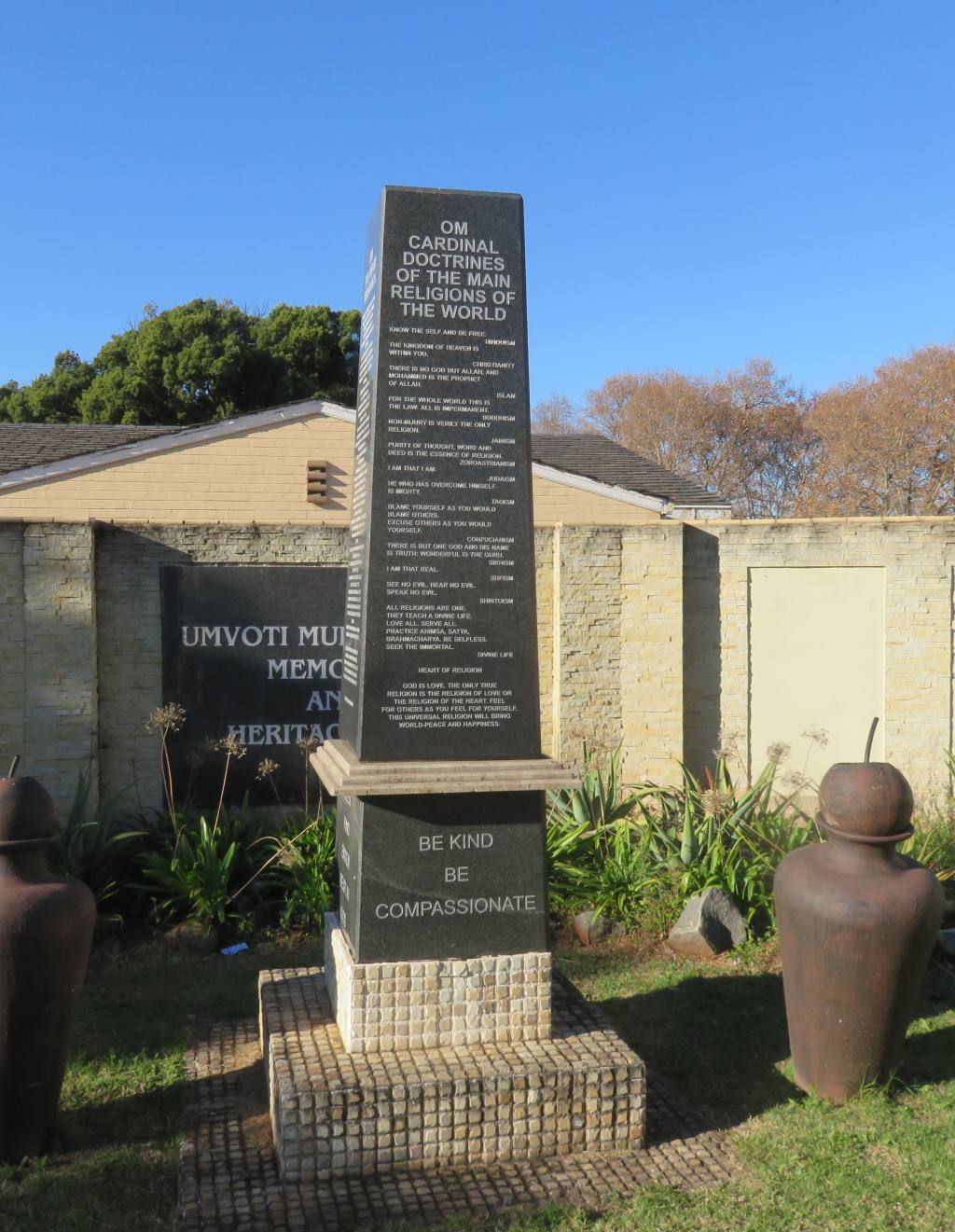 It wasn't a very happy reign, some of his time he spent in exile on Saint Helena (same place as Napoleon) and the last two years of his life he was exiled to a farm in the Transvaal. That was after he spent two years in jail, being implicated by the colonial administration into the Bambatha rebellion.
It wasn't a very happy reign, some of his time he spent in exile on Saint Helena (same place as Napoleon) and the last two years of his life he was exiled to a farm in the Transvaal. That was after he spent two years in jail, being implicated by the colonial administration into the Bambatha rebellion.
The monument behind the WW one is to Swami Sivananda, he was a religious leader in India. I don't know too much about his religion and I better leave this for the reader to check out. And behind it on the wall is a plaque commemorating the arrival of indentured labour from India in 1860.
On the opposite side to King Dimuzulu is another memorial, it looks similar to the one of Dimuzulu but it was all covered up, so I couldn't make out what that one is in honor of.
References
Ref 1.: Standard Encyclopaedia of Southern Africa, Nasou Limited
Ref 2.: "Ons Kerk Album van Hollandsche Kerken en Leeraren", publisher: unknown, printed in the 1920's